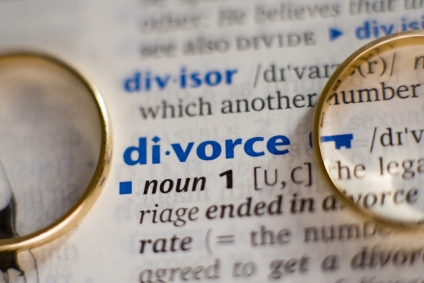- News & Comment
-
Online Shop
Online Services
Looseleafs
Law Reports
Books and eBooks
- CPD & Events
- Authors
- About Family Law
- Contact












 24 APR 2024
24 APR 2024

 24 APR 2024
24 APR 2024

 22 APR 2024
22 APR 2024

 22 APR 2024
22 APR 2024

 18 APR 2024
18 APR 2024









As reported by iFLG on 19 July 2017 the Family Procedure (Amendment No. 2) Rules 2017 were announced on 17 July 2017 with a number of rule changes to come into force on 7 August 2017. The changes are accompanied by the introduction of new divorce petition to be used from 7 August 2017. The present ('old') petition will not be accepted by the Courts after 4 September 2017.
We set out a few thoughts on the new petition in our previous article and we share here a quick-stop user guide to the new petition.
The re-design clearly had the interest of litigants-in-person in mind and the form is now much more user friendly and contains a lot more guidance for the parties. It will look like the online petition due to be rolled out around the country. Our comments here are focused on how the new petition will affect us as practitioners.
On the subject of fees, the new petition has missed the opportunity to include space for a PBS reference to be inserted by practitioners using that system. The only options for payment on the standard form are cheque and debit/credit card. When issuing practitioners should note specifically if they are paying by PBS either as a note of the Petition or in the covering letter to the Court.
More attention and evidence is now required in relation to the parties’ names used in the Petition. Section 2.1 now includes a section where the Petitioner must explain why their name in the petition does not match either their married name or the name on their marriage/civil partnership certificate. A change of name deed or statutory declaration may need to be enclosed to the petition as evidence of the Petitioner’s name. Care should be taken with 2.1 if using another name from the certificate and to avoid extra forms.
Similarly, at 3.1, the Petitioner may need to explain why the Respondent’s name in the Petition does not match their married name or the name in the marriage/civil partnership certificate. Thankfully evidence in support is not required where this applies to the Respondent.
Section 2.2 makes it easier for Petitioners to keep their contact details confidential. It was previously possible to do so by completing a C8 but the new Petition makes this easier and for the benefit of practitioners and parties.
Section 3.3 partially replicates the previous Box 3 in Part 9 of the old petition. If the Respondent has explicitly given an alternative address for service or has instructed solicitors, those details can now be inserted here.
Sections 4.3 and 4.4 replicate Part 2 of the old petition and accuracy is again crucial. Section 4.5 asks whether the marriage certificate is accurate and this is a new addition to consider although we do not see the relevance.
Section 5 replaces Part 3 and deals with the jurisdictional criteria. As we commented in our previous article, the options/indent of Article 3(1) of the Brussels II Regulation are now presented as a list.
Unfortunately this has the effect of putting potential incorrect glosses on the terminology of the Regulation. Clear tactical consideration is of course required in all cases here but especially when a jurisdiction dispute is anticipated.
Whilst the attempts of the authors of the new petition to make matters easier for the parties and practitioners should be applauded, we are concerned that several options in the list are based on either unsettled law or a gloss on the current law. This may create difficulties for practitioners in international cases.
Section 7 is the new statement of case in support of the underlying facts for the divorce (which are now in the new Section 6). Section 7.1 gives the Petitioner a simpler task when setting out the details of in 2/5 year separation cases and there is no longer any need for a narrative.
On that topic, care should be taken regarding the guidance note in relation to costs in separation cases at 11.2 which, in our view, is not strictly correct.
We mentioned in our previous article that a number of items are not now included in the new petition. Parts 7 and 8 of the current petition which deal, respectively, with identifying the children of the marriage and setting out requirements for special assistance for litigants at Court are not duplicated in the new petition. We discussed whether this is a positive evolution for the former in our previous article. In relation to the latter, practitioners will need to make alternative arrangements should assistance be required.
It is also a missed opportunity to include a field for the time the petition is received by the court given the CJEU has stated that this, and not the time of actual issue, gives priority under the first in time provisions of the Brussels II Regulation. Practitioners should continue to keep their own record.
Finally, the Petition now required the Petitioner or their legal representative to sign a statement of truth. This may see a shift in practice away from practitioners being able to sign the petitions which contain statements of fact to which they may not be able to attest.
Much of the remainder of the new petition remains as per the old petition albeit re-arranged and it will of course take some time for practitioners to acquaint ourselves with the new layout. Once we have done so we anticipate that the petition will be much easier to use not just for us as practitioners but also for our lay clients and for litigants in person.





Leave a commentOrder by
Newest on top Oldest on top